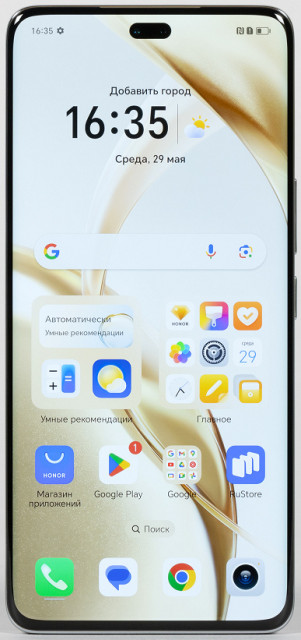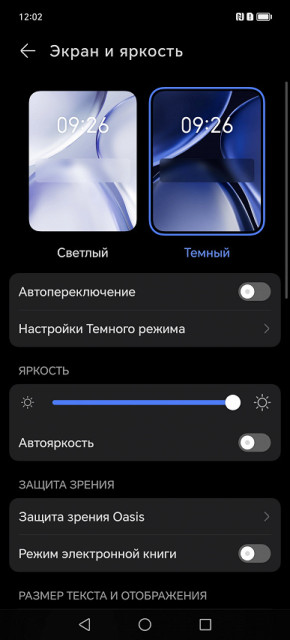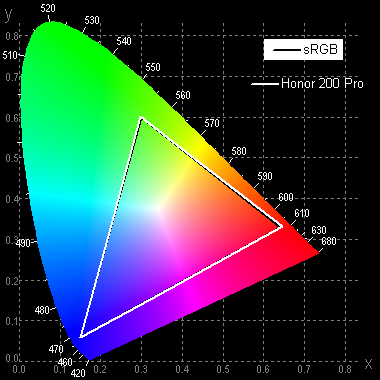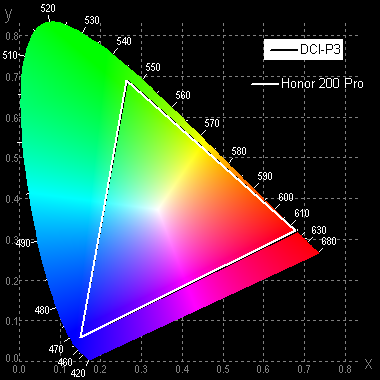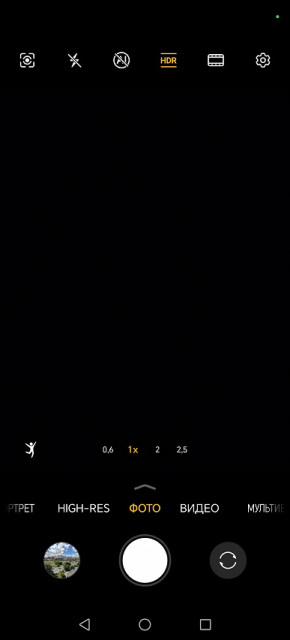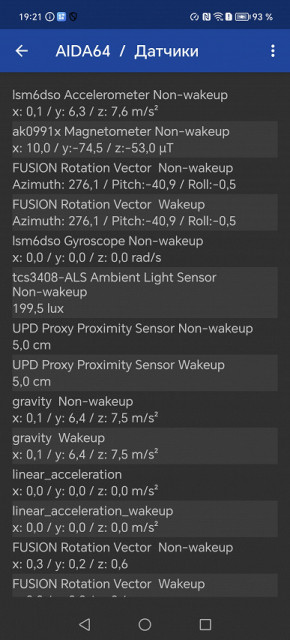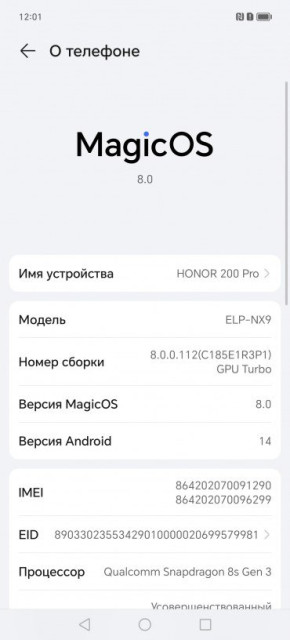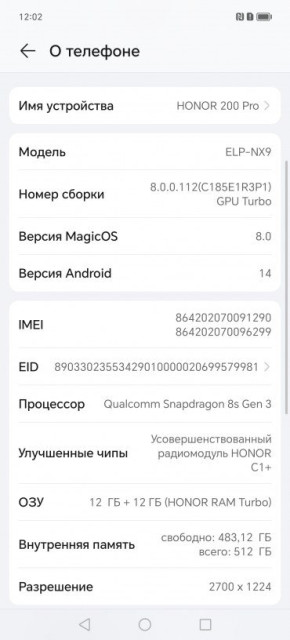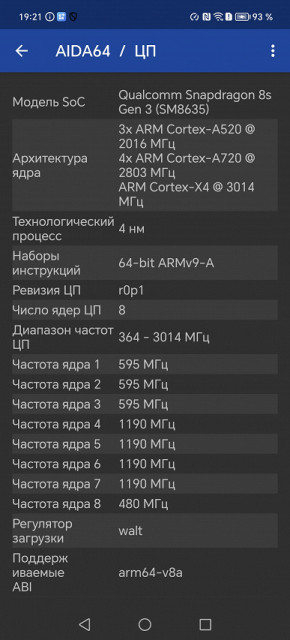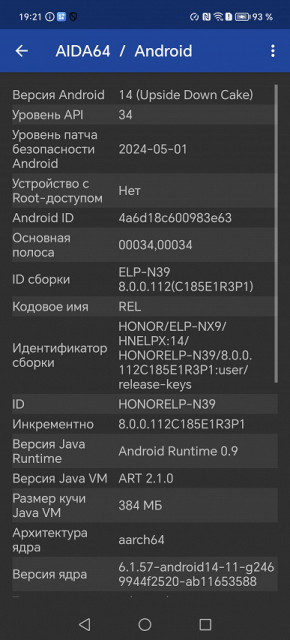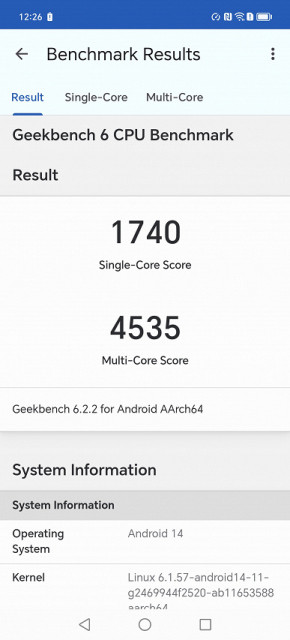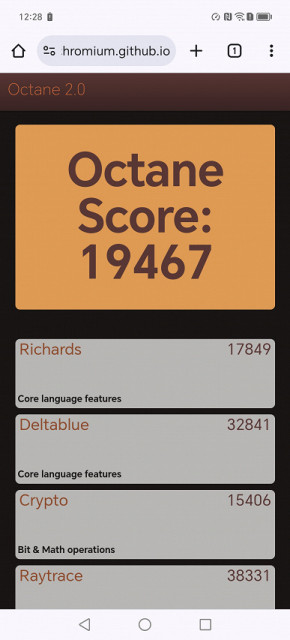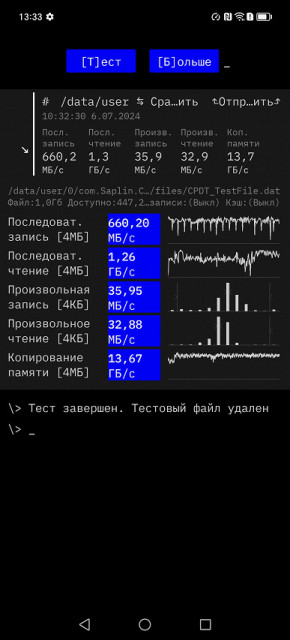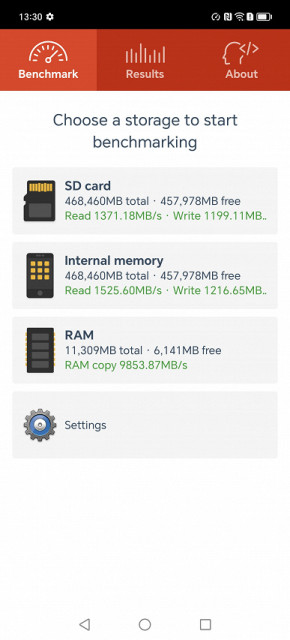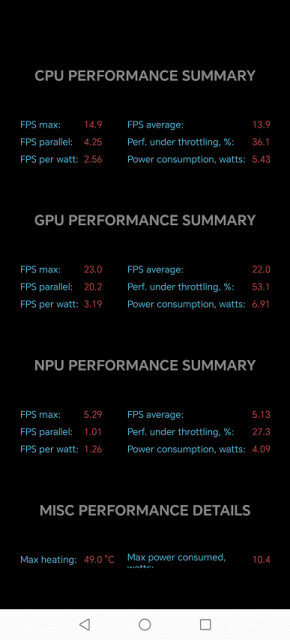Honor 200 Pro is the leading model in the Honor 200 series and the sub-flagship of the entire brand range. The manufacturer focuses on the camera with the flagship H9000 sensor and cooperation with the Harcourt portrait studio. The device is also equipped with a powerful hardware platform, a new type of battery, supports wireless charging and has many other interesting features, which we will discuss in more detail in the full review.

Main characteristics of Honor 200 Pro (model ELP-NX9)
- SoC Qualcomm SM8635 Snapdragon 8s Gen3, 8 processor cores (1×Cortex-X4 @3.0 GHz + 4×Cortex-A720 @2.8 GHz + 3×Cortex-A520 @2.0 GHz)
- GPU Adreno 735
- OS Android 14, MagicOS 8
- Touchscreen OLED, 6.78″, 1224×2700, 437 ppi, 120 Hz
- RAM 12 GB, internal memory 512 GB
- No microSD support
- Nano-SIM support (2 pcs.)
- Networks 2G GSM, 3G WCDMA, 4G LTE, 5G
- GPS, Galileo, GLONASS, QZSS, BDS
- Wi-Fi 6
- Bluetooth 5.4, A2DP, LE, aptX HD
- NFC
- IR port
- USB 2.0 Type-C, USB OTG
- no 3.5 mm audio output for headphones
- Rear cameras 50 MP + 50 MP (long-focus) + 12 MP (wide-angle), video 4K@30 fps, gyro-EIS, OIS
- Front camera 50 MP + 2 MP
- Proximity and light sensors, magnetic field, accelerometer, gyroscope
- Fingerprint scanner (under the screen, optical)
- IP65 protection rating
- Battery 5200 mAh, charging 100 W, wireless charging 66 W
- Dimensions 163×75×8.2 mm
- Weight 199 g
Appearance and ease of use
The Honor 200 Pro smartphone comes in a standard cardboard box with a minimalist design.
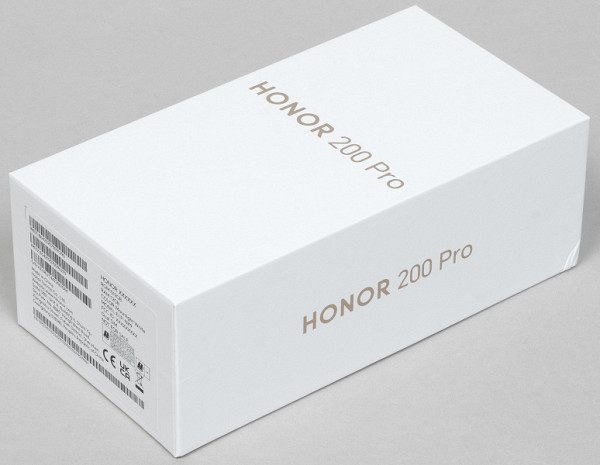
The kit includes only the interface cable and a charger with a maximum output power of 100W.
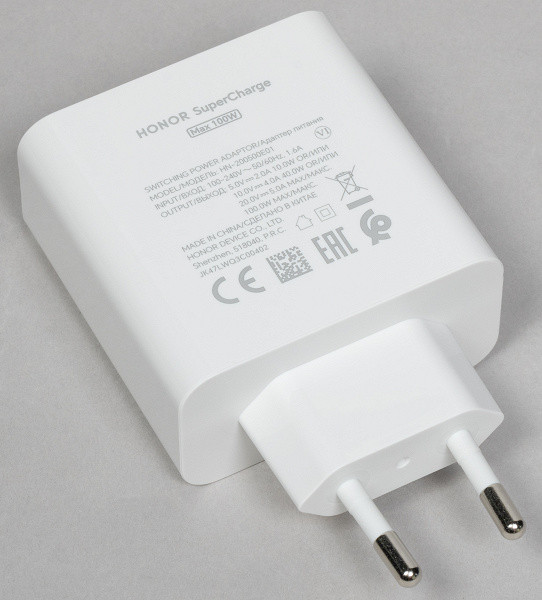
The Honor 200 Pro smartphone features an elegant design with streamlined body shapes, where the curved edges of the panels and narrow side edges are harmoniously combined. The side frame, although not reduced to a minimum, has a small flat surface, which is convenient to hold the device. Thanks to the curved edges of the front and back panels, the smartphone fits comfortably in the hand, without creating discomfort.
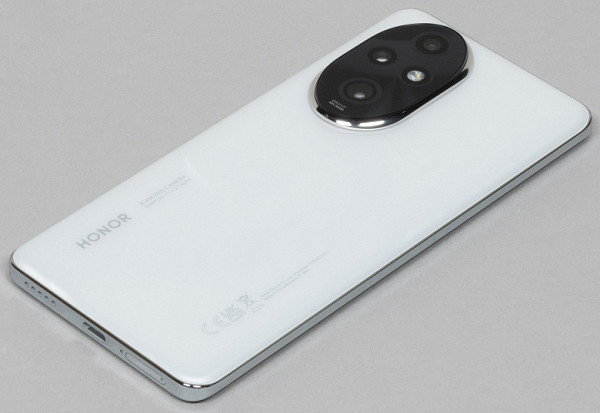
In terms of materials, there is nothing unusual: the side frame is made of metallized plastic. The manufacturer does not specify what the back panel is made of — it could be either real glass or plastic. In the white version, the cover is decorated with a mother-of-pearl pattern, which has already been seen in other Honor products. Other color options for the case are also available.
The back panel is decorated with an oval block, which combines all the camera modules and the flash. This block is framed by a silver metalized rim and is conveniently placed in the corner so that the cameras are not covered by your finger when shooting.

This block protrudes noticeably beyond the case, so that when the smartphone is placed on a hard surface, it wobbles when working with the screen.

The front glass again has inconvenient curved edges — glare and slippery.

The smartphone has standard dimensions — neither too big nor too small. Its weight does not exceed the psychologically important threshold of 200 grams, which contributes to the convenience of use over a long period of time. The body is well balanced both in size and weight.

The buttons on the side are large, high, with a long, elastic stroke and a clear response. There are no complaints about the location of the buttons, they are installed on one side, right under the finger.

The fingerprint scanner is built into the bottom of the screen under the glass. It works fine, although not as fast as a classic capacitive scanner. At the top of the screen, in the oblong cutout of the matrix, is the front camera, next to which is the scene depth sensor.

The pull-out tray on the bottom edge can accommodate two Nano-SIM cards (one on each side of the sled). There is no space for a microSD memory card.
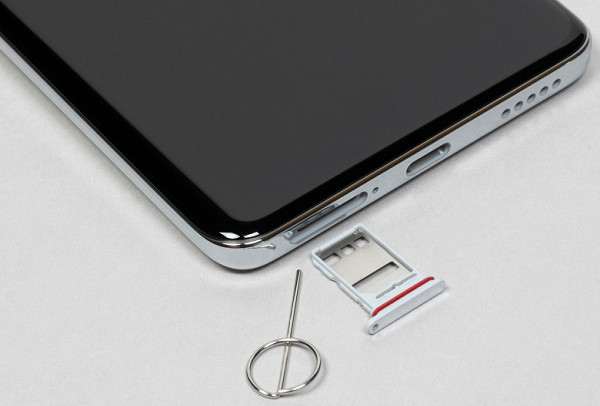
Also on the bottom edge are a speaker, microphone, and USB Type-C connector. There is no 3.5 mm audio output for a mini-jack for wired headphones.

An additional microphone and speaker are installed on the top end, and there is also an IR port peephole.

The Honor 200 Pro body is protected from dust and moisture according to the IP65 standard. On the global market, the device is available in three colors, which are translated into Russian as: “Moon White”, “Velvet Black” and “Ocean Blue”.
Screen
The Honor 200 Pro features a 6.78-inch AMOLED display with a resolution of 1224×2700 (aspect ratio 20:9), covered with protective glass with curved edges. The physical dimensions of the screen are 71×157 mm, and the pixel density is 437 ppi. The width of the bezels around the display is approximately 2 mm at the top and sides, and 3 mm at the bottom. A refresh rate of 120 Hz is supported.
The front side of the screen is made of glass with a mirror-smooth surface that is resistant to scratches. The anti-glare properties of the screen are noticeably better than those of the Google Nexus 7 (2013) (hereinafter Nexus 7), as evidenced by the reflection of objects. The outer surface of the display has a special oleophobic coating, which is much more effective than that of the Nexus 7, making it easier to remove fingerprints and reducing their appearance.
When manually adjusting the brightness, the maximum value when displaying a white field on the entire screen was 615 cd / m² in normal conditions, and in bright light it can reach 1190 cd / m². The maximum brightness is very high. The smaller the white area on the screen, the brighter it becomes, so the actual brightness of white areas often exceeds the specified values. Given the excellent anti-glare properties, the readability of the screen in the sun should be at a good level. The minimum brightness is 2 cd / m², which makes the device comfortable to use in complete darkness. Automatic brightness control based on the light sensor (located to the left of the front camera) works correctly and allows the user to adjust the brightness to their preferences. By default, auto-brightness reduces the brightness to 5 cd/m² (too dark) in complete darkness, sets it to 150 cd/m² (optimal) in an office with artificial lighting (about 550 lux), and increases it to 1190 cd/m² (maximum) in bright sunlight. We adjusted these values, raising the brightness in the dark to 13 cd/m², leaving the other values unchanged.
At high and medium brightness levels, the screen shows noticeable modulation at a frequency of 60 or 120 Hz. The figures below show graphs of the dependence of brightness (vertical axis) on time (horizontal axis) for different brightness levels in 60 Hz refresh mode.
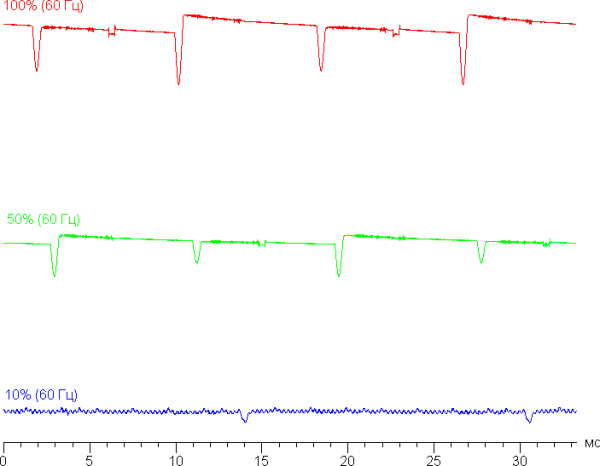
As you can see, at high and medium brightness the frequency is 60 Hz, but due to the low modulation duty cycle there is no visible flickering. With a significant decrease in brightness, the modulation frequency increases to 3.84 kHz, so the flickering also remains unnoticeable.
In the screen settings, you can enable a mode with an increased refresh rate of up to 120 Hz.

In this mode, the smoothness of scrolling (of menu lists, etc.) is increased. Let's see if the modulation character changes:
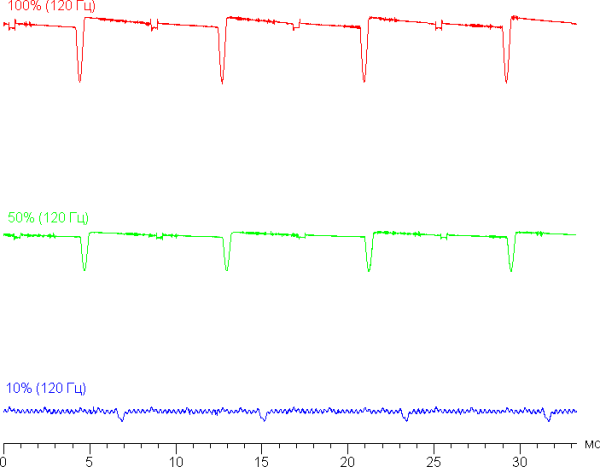
At high and medium brightness, the modulation frequency has doubled compared to the 60 Hz mode, but at low brightness, the modulation pattern remains the same. There is still no visible flickering.
This screen uses an AMOLED matrix — an active matrix on organic light-emitting diodes. A full-color image is created using subpixels of three colors: red ®, green (G) and blue (B), while the red and blue subpixels are half as small, which can be designated as RGBG. This is confirmed by a fragment of a microphotograph.
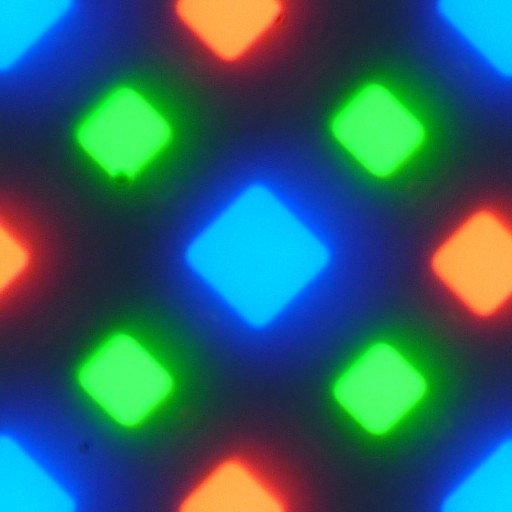
The fragment shown here has 4 green subpixels, 2 red (4 halves) and 2 blue (1 whole and 4 quarters). These fragments can be repeated to completely fill the screen without gaps or overlaps. Samsung uses the name PenTile RGBG for such matrices. The screen resolution is determined by the green subpixels, and the resolution for the red and blue ones will be lower. This leads to some unevenness of the contrast borders and other artifacts, but due to the high resolution, they have a minimal impact on the image quality.
The screen has excellent viewing angles. The brightness decreases noticeably when viewed at an angle, but in comparison with the Nexus 7, the decrease in brightness is much less pronounced. Therefore, with formally the same brightness, the smartphone screen looks much brighter compared to LCD screens, since the screen of a mobile device is often viewed at a slight angle. Although at large angles, the white color of the screen may acquire a slight blue-green tint, the black color remains deep black at any viewing angle. The contrast parameter is not applicable in this case. For comparison, photographs are presented in which the same images are displayed on the screens of a smartphone and a second device, with a brightness of approximately 200 cd/m² and a camera color balance of 6500 K.
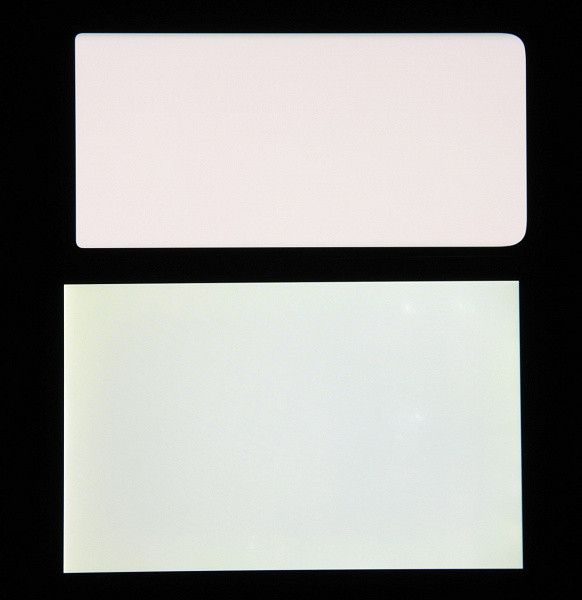
Note the good uniformity of brightness and color tone of the white field.
And the test picture (Normal [colors] profile):

The color rendition on the screen is good, the colors are saturated, although the color balance varies slightly between screens. Please note that a photograph is not a reliable way to assess color rendition and is provided for illustrative purposes only. For example, the pronounced reddish tint of white and gray in the photo of the smartphone screen is visually absent when viewed directly, which is confirmed by tests using a spectrophotometer. This is due to the fact that the spectral sensitivity of the camera matrix does not fully coincide with the characteristics of human vision.
It is worth noting that the image on the screen occupies the entire available area in landscape orientation and goes onto the curved edges, which leads to slight darkening and color distortion. In bright light, these areas often glare, which makes it difficult to view images on the entire screen. Even movies with an aspect ratio of 16:9 are overlapped by the curved edges, which interferes with comfortable viewing.
The photo above was taken with the “Normal [colors]” profile activated in the display settings; there are two profiles available in total.
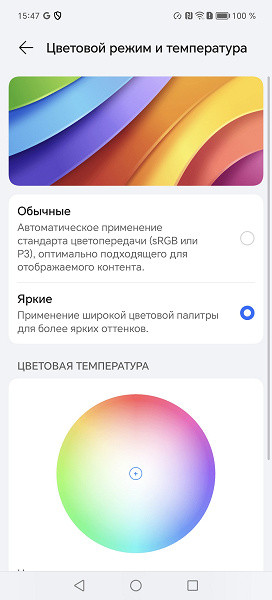
The Vivid [Colors] profile features color balance and increased color saturation:

Switching of the matrix elements state occurs almost instantly, however, at the switching front a step of about 17 ms wide (which corresponds to a refresh rate of about 60 Hz) or about 8 ms (120 Hz) can be observed. For example, the dependence of brightness on time when switching from black to white looks like this:

In some conditions, the presence of such a step can lead to the appearance of trails that follow moving objects.
The gamma curve, constructed using 32 points with an equal interval in shades of gray, showed that there are no significant deviations in either light or dark areas. The exponent of the approximating power function is 2.19, which is close to the standard value of 2.2. The real gamma curve deviates only slightly from the power dependence.

Let us recall that in OLED screens the brightness of image fragments changes dynamically depending on the displayed image, which leads to a slight decrease in brightness for generally bright images. Therefore, the obtained dependence of brightness on hue (gamma curve) may not correspond to the gamma curve of a static image, since the measurements were taken with sequential display of gray shades almost on the entire screen.
The color gamut of the screen depends on the selected profile (Vivid or Normal), as well as on the profile specified in the image and the program that displays the image. In the Vivid profile, the gamut is slightly expanded compared to that specified in the image, while in the Normal profile, the gamut corresponds to that specified in the image. If the profile is missing from the image, it is assumed that it corresponds to sRGB. Programs that display the image must take into account the capabilities of the screen. For example, Google Chrome supports image profiles, but considers the screen to be sRGB, while the standard Gallery program takes into account the capabilities of the screen.
Let's consider two extreme cases:
- For an image with the DCI-P3 profile, with the Vivid profile selected and the Gallery software used, the color gamut is very wide, exceeding DCI-P3.
- For an image with the sRGB profile, with the Normal profile selected and the Gallery or Google Chrome software used, the gamut is close to sRGB.
In the first case, the component spectra (that is, the spectra of pure red, green and blue colors) are very well separated:
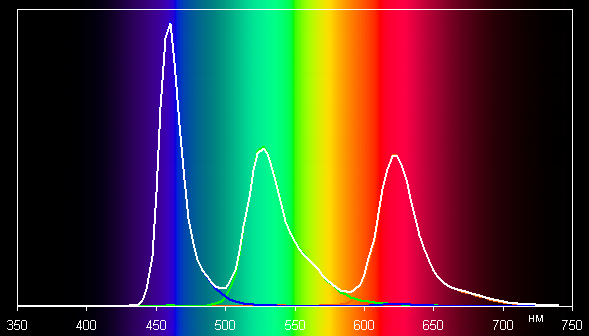
In the second case, the color components are mixed with each other to a significant degree:
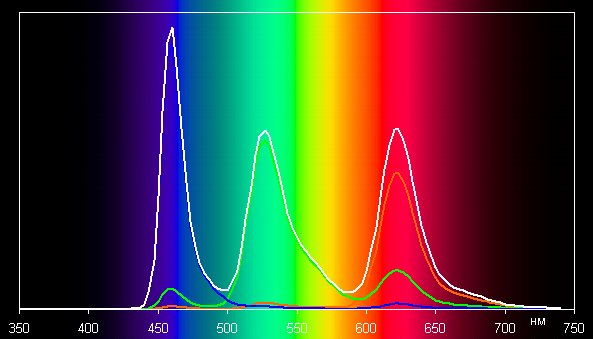
Accordingly, the color gamut for an image with the sRGB profile with the Vivid profile selected and using the Gallery or Google Chrome software is slightly wider than sRGB. In the case of an image with the DCI-P3 profile with the Normal profile selected and using the Gallery software, the gamut is close to DCI-P3.
It should be noted that on screens with an extended color gamut (without appropriate correction), the colors of normal images intended for sRGB devices may look oversaturated. Therefore, it is recommended to use the Normal profile for viewing movies, photos, and other natural images. If the image has a profile other than sRGB, it is better to use the standard Gallery program to view it.
This device also has the ability to adjust the color balance by selecting a color temperature profile or adjusting the hue on the color wheel.

In the Normal profile, even without correction, the balance of shades on the gray scale remains good, since the color temperature is close to the standard 6500 K, and the deviation from the black body spectrum (ΔE) is less than 10 units, which is considered acceptable for a consumer device. The color temperature and ΔE remain stable at different shades, which has a positive effect on the visual perception of the color balance. The darkest areas of the gray scale can be ignored, since the color balance in them is less important, and the measurement error at low brightness can be significant.
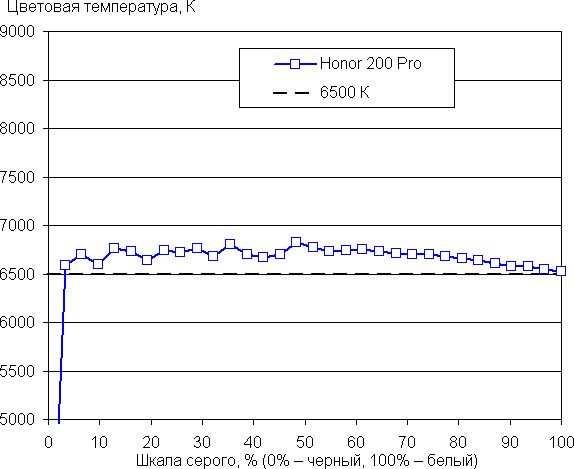
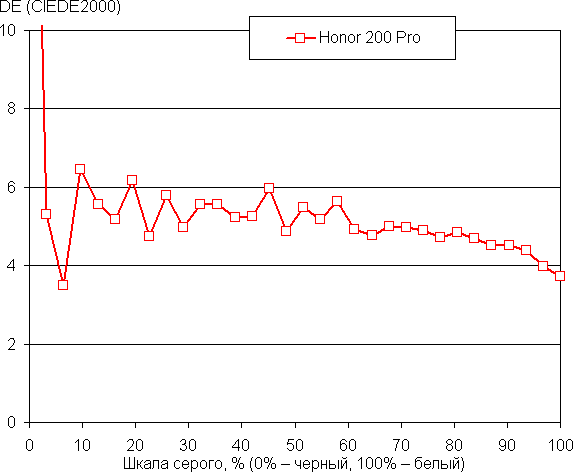
Of course, there is a function to reduce the intensity of the blue component:
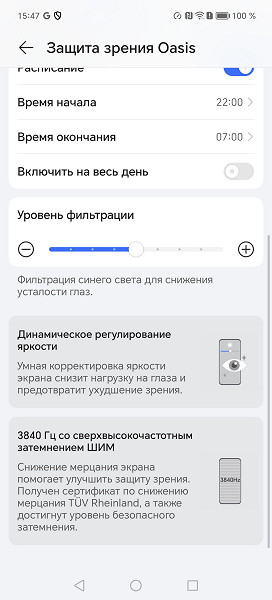
Bright light can disrupt your circadian rhythm, but this can be solved by reducing the brightness to a comfortable level without affecting the color balance and reducing the contribution of blue light.
This device does not seem to support DisplayPort Alt Mode for USB Type-C, which means that there is no way to output images and sound to external devices via this port.
So, the screen offers a very high maximum brightness (1190 cd / m²) and excellent anti-glare properties, which allows you to comfortably use it outdoors in sunny weather. In complete darkness, the brightness can be reduced to 2 cd / m². The automatic brightness adjustment mode works adequately. The advantages of the screen include an effective oleophobic coating, no visible flickering, high resolution, support for a 120 Hz refresh rate, close to sRGB color gamut and good color balance (with the right profile), as well as correct display of images with the DCI-P3 color gamut. The OLED screen provides true blacks and less brightness loss when viewed at an angle compared to LCD displays. Overall, the screen quality is very high.
However, the curved edges of the screen have a negative impact on image quality, causing color tone distortion, decreased brightness at the edges, and glare in ambient light conditions.
Camera
The Honor 200 Pro smartphone is equipped with three main rear cameras:
- Main: 50 MP, 1/1.3″, 1.2 µm, f/1.9 aperture, autofocus (PDAF), optical image stabilization (OIS)
- Telephoto: 50 MP, f/2.4 aperture, autofocus (PDAF), 2.5× optical zoom, optical image stabilization (OIS)
- Wide-angle: 12 MP, f/2.2 aperture, 112˚ viewing angle, autofocus (AF)
The main portrait camera of the smartphone is equipped with an H9000 sensor and uses dual stabilization — optical (OIS) and electronic (EIS). The Shape Memory Alloy (SMA) drive provides autofocus (AF) and optical image stabilization (OIS), improving the focusing speed and stability of photos in low light or while moving.
By default, the camera combines pixels, creating photos with an equivalent pixel size of 2.4 μm and a resolution of 12.5 MP. A full-resolution shooting mode of 50 MP is also available.
50 MP photos are not very detailed, and processed 12.5 MP photos, as a rule, have better contrast and color rendition. Photos in pixel binning mode show better quality. However, reduced photos can be slightly cropped, which allows you to slightly improve the composition if the scene does not fit in the frame and you do not want to switch to the wide-angle camera.
Overall, the camera shoots well, although its photos are not particularly high quality. Detail and sharpness are high, the dynamic range allows avoiding overexposure and loss in shadows, the contrast and volume of the images are excellent, there is no noise.
Here are more examples of shooting in automatic mode:
Night shots have excellent exposure, but even with aggressive processing, details cannot be preserved due to the struggle with noise. Color rendition remains close to natural.
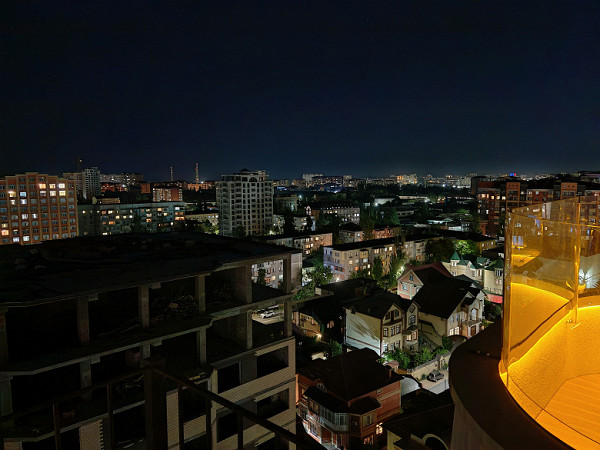

The new series places a special emphasis on the Harcourt Portrait Mode. This mode includes a set of software tools for color correction, exposure and shutter speed control, using artificial intelligence to improve light and shadows. Developed in collaboration with the Harcourt studio, it uses the Honor AI Portrait engine to reproduce Harcourt's artistic techniques.
The camera mode set also includes the well-known AI Motion Sensing mode. In this mode, the camera automatically detects and selects the clearest frame. To use, simply point the smartphone at the object and hold it; the camera itself will take a blur-free photo, without the need to press the shutter button.


The second camera offers 2.5× optical zoom and, like the main one, shoots with pixel binning by default, but a full-resolution shooting mode is also available. In this case, using 50 MP is not justified, as photos with pixel binning demonstrate excellent sharpness and good detail. The zoom copes effectively with the task of isolating distant objects.
Of course, wide-angle photographs have very blurry edges, and overall the detail is noticeably lower, but it is quite possible to take a couple of landscape shots.
The camera supports 4K video recording at 60 frames per second. Thanks to a powerful processor and a specialized image processing chip, the video is smooth, with excellent stabilization and no strobe effect. The image quality is high: detailed, bright and contrasty. The sound is recorded clearly.
The front camera with a resolution of 50 MP and an aperture of f / 2.1 is equipped with a depth sensor. Although shooting in full 50 MP resolution is impractical, self-portraits are high-quality, without overexposure and collapsed shadows, with full elaboration of the lighting range and high detail. Portrait mode effectively separates the subject from the background, and the color rendition remains true.
Telephone and communications
The Honor 200 Pro smartphone is equipped with the Honor C1+ radio chip, supports mobile networks up to 5G and demonstrates stable operation in urban conditions, maintaining communication and quickly restoring it after breaks. It also includes a wireless adapter with support for two Wi-Fi 6 bands, Bluetooth 5.3 and NFC, as well as e-SIM support.
The satellite module works with GPS, Galileo, GLONASS, QZSS and BDS. With a cold start, satellites are detected quickly, and the positioning accuracy is high.
The interlocutor's voice in the speaker is intelligible, the volume is sufficient, and the vibration motor is pleasant and of medium intensity. All the necessary sensors, including a gyroscope, are present.
Software and multimedia
Honor 200 Pro runs on Android 14 with MagicOS 8 shell. The interface has a laconic design, good optimization and smooth operation. Users can customize the device as they wish. The top curtain is divided into two parts depending on the swipe location and includes full support for Google services and Google Play Store. Also available is a proprietary app store and the Russian RuStore repository for installing local applications, including banking ones.
The interface includes artificial intelligence features that analyze user habits and predict their intentions. MagicOS allows you to customize the lock screen, use large folders with a customizable size and expand application icons for quick access to functions. Magic Portal is a new AI-based feature that simplifies interaction with content: you can highlight text for navigation, create a note, search for products by pictures and share photos on social networks.
The Magic Capsule function provides dynamic notification around the front camera, displaying the current status of applications and providing quick access to actions.
The smartphone is equipped with two high-quality stereo speakers that provide loud, clear and surround sound. The audio capabilities of the device do not cause any complaints. For wireless headphones, there is support for Bluetooth 5.3, as well as Honor Histen 7.1 and Spatial Audio sound effects.
Performance
The Honor 200 Pro smartphone is equipped with a Qualcomm SM8635 Snapdragon 8s Gen3 SoC with 8 CPU cores and an Adreno 735 GPU. It has 12 GB of RAM (LPDDR5X) and 512 GB of built-in storage (UFS 4.0). MicroSD memory cards cannot be installed, but external devices can be connected via the USB Type-C port in USB OTG mode.
Although the platform is considered sub-flagship, it is made using a 4-nm process technology and is a slightly cut-down version of the flagship Snapdragon 8 Gen3, which is confirmed by tests.
The performance of the smartphone fully meets expectations: the interface works smoothly, and games, including demanding Genshin Impact at high graphics settings, run without delays. The performance is almost comparable to flagship devices.
Testing in complex tests AnTuTu and GeekBench:
For ease of perception, all smartphone testing results in current versions of popular benchmarks are presented in tables. The tables also include other devices from different segments, tested on the same versions of benchmarks, to ensure a clear comparison. However, it is worth noting that results from different versions of benchmarks cannot be used within one comparison. This means that some current and worthy models that have been tested on previous versions of programs remain outside the scope of this analysis.
| Honor 200 Pro (Qualcomm Snapdragon 8s Gen3) | Honor 200 (Qualcomm Snapdragon 7 Gen3) | Google Pixel 8 Pro (Google Tensor G3) | Realme 12+ 5G (MediaTek Dimensity 7050) | Huawei Pura 70 Ultra (Kirin 9010) | |
|---|---|---|---|---|---|
| AnTuTu (v10.x) (higher is better) | 1297546 | 792657 | 1033512 | 620852 | |
| GeekBench 6 (bigger is better) | 1740/4535 | 1159/3206 | 1566/3701 | 929/2277 | 1446/4492 |
Testing the graphics subsystem in GFXBenchmark gaming tests:
| Honor 200 Pro (Qualcomm Snapdragon 8s Gen3) | Honor 200 (Qualcomm Snapdragon 7 Gen3) | Google Pixel 8 Pro (Google Tensor G3) | Realme 12+ 5G (MediaTek Dimensity 7050) | Huawei Pura 70 Ultra (Kirin 9010) | |
|---|---|---|---|---|---|
| GFXBenchmark Aztec Ruins OpenGL (1080p Offscreen, fps) | 45 | 56 | 107 | 29 | 82 |
| GFXBenchmark Aztec Ruins Vulkan (1080p Offscreen, fps) | 129 | 66 | 108 | 26 | 82 |
| GFXBenchmark Car Chase ES 3.1 (1080p Offscreen, fps) | 96 | 47 | 78 | 26 | 56 |
| GFXBenchmark Manhattan ES 3.1 (1080p Offscreen, fps) | 169 | 83 | 142 | 45 | 60 |
| GFXBenchmark T-Rex (1080p Offscreen, fps) | 434 | 174 | 328 | 105 | 337 |
Testing in browser cross-platform tests:
| Honor 200 Pro (Qualcomm Snapdragon 8s Gen3) | Honor 200 (Qualcomm Snapdragon 7 Gen3) | Google Pixel 8 Pro (Google Tensor G3) | Realme 12+ 5G (MediaTek Dimensity 7050) | Huawei Pura 70 Ultra (Kirin 9010) | |
|---|---|---|---|---|---|
| Google Octane 2 (bigger is better) | 19467 | 24106 | 52617 | 7230 | 5180 |
| JetStream (bigger is better) | 70 | 60 | 102 | 29 | 20 |
Memory speed test results:
Heat
We test for performance degradation when heating using the Burnout Benchmark program, which allows you to load the CPU, GPU and NPU:
| Load on | Heating performance, as a percentage of maximum |
|---|---|
| CPU | 36% |
| GPU | 53% |
| NPU | 27% |
Battery life
The Honor 200 Pro smartphone is equipped with a 5200 mAh battery made using silicon-carbon technology. Thanks to the modern chip made using the 4-nm process technology, the device shows an above-average level of autonomy.
Testing was carried out under standard conditions without enabling power-saving modes. The minimum comfortable brightness level of about 100 cd/m² was used. The tests involved: continuous reading in Moon+ Reader (light theme), watching HD video (720p) via Wi-Fi, and playing Injustice 2 with automatic graphics settings.
| Battery capacity | Reading mode | Video mode | 3D gaming mode | |
|---|---|---|---|---|
| Honor 200 Pro | 5200 mAh | 26 h 00 m | 24 h 00 m. | 7 h 30 min |
| Realme GT 6 | 5500 mAh | 32 h 00 m | 27:00 | 9:00 a.m. |
| Samsung Galaxy S24 Ultra | 5000 mAh | 32 h 00 m | 26 h 00 m | 9:00 a.m. |
| Honor Magic6 Pro | 5600 mAh | 38 h 00 m | 30:00 a.m. | 9:00 a.m. |
| Google Pixel 8 Pro | 5050 mAh | 22:00 | 18:00 | 7:00 a.m. |
| Honor 90 | 5000 mAh | 21:00 | 18:00 | 7:00 a.m. |
| Honor Magic V2 | 5000 mAh | 21:00 | 17:00 | 6:00 a.m. |
| Oppo Find N3 | 4805 mAh | 20:00 | 18:00 | 6:00 a.m. |
These results represent the maximum values achieved under “ideal” conditions, including no SIM cards installed. Any changes in usage conditions may result in a decrease in these values.
The included 100W charger charges the smartphone in about 50 minutes. It also supports 66W Honor SuperCharge wireless charging.
Results
Honor 200 Pro offers a high-quality AMOLED screen, even with curved edges, excellent stereo sound, a powerful sub-flagship Qualcomm platform, and impressive photo and video shooting capabilities. The smartphone also provides an up-to-date set of network modules and good battery life. Despite the lack of premium case materials and Wi-Fi 7 support, the presence of wireless charging compensates for these shortcomings. In general, for $782, the device provides excellent capabilities.


